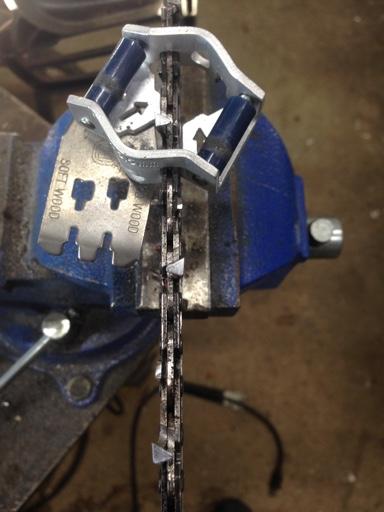I’m a dummy and the Husky roller guides work best for me.
This chain has cut 68 cords (real cords) of blocks so far. My goal is to hit 75 before I retire it.
Hand filed with the Husky roller guide every one or two tanks fuel and once on the grinder to even out the teeth. (I tend to shorten left teeth more than rights)
Still cuts straight and fast.
Seriously, as long as the file is aligned and rolled straight without wobbling, even a dummy like me can’t mess it up.
Sent from my iPad using Tapatalk







